Hi! I’m starting a new series focusing on Chinese pantry!
A pantry is where every new kitchen and cookbook starts. Through the years of recipe development and cooking, I’d like to think of pantry ingredients as building blocks: they construct flavor profiles (think sweet sour, spicy and numbing), and are then used in a variety of dishes. Not only because it’s traditional to use this ingredient over that, but also because it entails the historical and agricultural context of a cuisine.
That’s why my small mission is to build my content around a few core Sichuan and Chinese ingredients, to show you what they are and how to use them: whether you're diving into Chinese cuisine for the first time or seeking to repurpose long-forgotten condiments.
Let’s start with doubanjiang, one of the most fundamental Sichuan ingredients, the start of any plate of mapo tofu and the base of hot pot sauce. Scroll to the bottom if you want to cook the recipe first!
What is doubanjiang
Doubanjiang (豆瓣酱), also known as spicy fermented bean paste or chili bean paste, is a deeply red or brown paste made from fermented fava beans (broad beans) and chili peppers. It is rich, savory, subtly spicy and umami-packed. The most famous variety is from Pixian (郫县, now Pidu district in suburb Chengdu), also called Pixian Doubanjiang or Pixian Douban.
The traditional process of making doubanjiang kicks off in late summer with the harvesting of locally-grown erjingtiao chilis1. Shelled fava beans are soaked, mixed with wheat flour, and left to ferment and develop mold. They're combined with pre-fermented chopped chilis seasoned with salt from Zigong. The mixture is then stored in large jars outdoors for further fermentation, lasting from a few months to up to years. This meticulous process, involving manual stirring, sun exposure during the day, and covering during nights and rainy days2, thrives in the humid and relatively warm terroir of Pixian, earning it as the geographical indication of this condiment. I went to the Museum of Sichuan Cuisine and a small Museum of Pixian doubanjiang where you can the jars filled with hand-stirred doubanjiang, in the former, you can even try to stir those thick pastes yourself.
Revered as "the soul of Sichuan cooking," 3 doubanjiang forms intricate flavor profiles such as ma la (spicy and numbing, as seen in Mapo tofu) and jia chang (home-style, savory, and umami-rich). Legend has it that resourceful immigrants inadvertently created doubanjiang by mixing moldy beans with chilis during their journey to Sichuan. Since the establishment of small factories producing doubanjiang in Pixian around 1800, its consumption surged in the following century, mirroring the development of the cuisine’s deployment of more chilis and complex flavors.
In Sichuan, it's a staple condiment used to elevate the flavors of vegetables, meat, and fish dishes, imparting mild spiciness, depth, and richness. A decent Sichuan restaurant would DIY or have its exclusive doubanjiang provider. Some families still make doubanjiang at home, which is called “home-style doubanjiang” or “Shady Doubanjiang”, fermented without sun-drying or without broad beans at all. My grandmother prepares her version using only chopped chilis, oil, salt, garlic, and ginger, added in her rendition of mapo tofu.
How to pick doubanjiang
Pixian Doubanjiang is readily available in well-stocked Asian supermarkets and online. My go-to brand is Juan Cheng. They often come in a plastic jar (or called hongyou douban, aged about 3 months) or in a paper packaging, sometimes labeled as class one doubanjiang (aged over 1 year).
For those seeking quality, try artisanal handcrafted doubanjiang. I bought a 5-year-aged doubanjiang from China at a relatively high price point (about 20 euro). The older doubanjiang is often ideal for double-fried pork or braised dishes with darker colors, while younger doubanjiang is used for brighter stir-fries. You can mix doubanjiang of different years. In the US, brands like Mala Market or Fly by Jing offer 3-year doubanjiang on their platforms.
How to cook with doubanjiang
Store-bought Doubanjiang is primarily used in warm dishes, like stir-fries and braised dishes than being a dipping sauce. A recipe normally starts with frying doubanjiang with some oil, then you add aromatics and main ingredients. Here are three tips to cook with doubanjiang:
Chop it: As Pixian Doubanjiang isn't smooth, chop the paste before using it to avoid tasting bean chunks and chili skins in your sauce. Or do a bigger batch with a stick blender.
Low heat: Doubanjiang burns easily, so fry it over low heat to release its flavor and color.
Start with less: Doubanjiang brands vary in heat and saltiness, so begin with a small amount and adjust to taste.
Once opened, store it in the refrigerator; this fermented sauce can last for months, or even years.
Recipe: Steak with doubanjiang butter sauce
I was preparing a Steak au Poivre the other day and incorporated Sichuan pepper based on a recipe I found on NYT Cooking. Then I had an idea—why not add doubanjiang to the steak sauce? It might sound wild, but considering doubanjiang's role in dishes like water-boiled beef, I thought it was worth a try. The result? A flavorful umami sauce with a buttery spicy kick—a delightful twist. There will be one or two traditional recipes coming to you next week!
Ingredients:
Serving: 1
For the steak
1 steak (rib-eye)
20 g butter
2 cloves of garlic
1 tbsp doubanjiang
2 tbsp shaoxing wine or sherry
1 tbsp sugar
1 tbsp white rice vinegar
A few Sichuan pepper, crushed
chives, chopped for garnish
For the salad
1 Persian cucumber
3 radishes
1 tbsp rice vinegar
1 tbsp sesame oil
1 tsp sugar
salt
Instructions
Thinly slice cucumber and radish with a mandolin, then season with salt, rice vinegar, sesame oil and sugar, mix to combine.
In a frying pan, heat vegetable oil until hot, and cook the steak until desired doneness. Then set aside to rest.
Wipe the pan, and lower the temperature. Over low heat, add butter, when it starts to bubble, add your doubanjiang, stir until it dissolves in the butter, and add garlic and crushed Sichuan pepper. Fry until fragrant. Then deglaze with shaoxing wine, and white rice vinegar. Add sugar, and mix until the sauce is smooth.
Slice the steak and serve the steak with the warm doubanjiang butter sauce, steamed rice, and the cucumber radish salad.
For doubanjiang purists, erjingtiao chilis grown near Chengdu are the preferred choice due to their thin skin and higher oil content.
This technique, known as "翻, 晒, 露" involves a unique combination of sun exposure and careful monitoring of temperature and humidity.
Lan Yong suggests that traditional Sichuan cuisine only emerged after the invention of doubanjiang in late Qing Dynasty. Without it, dishes like double-fried pork would not exist, from the book History of Sichuan cuisine,《中国川菜史》

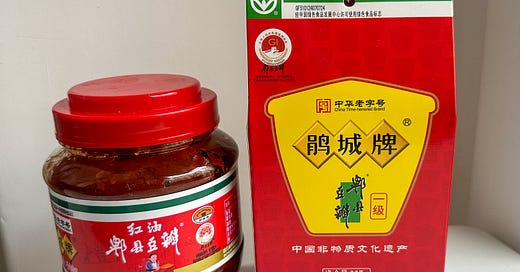


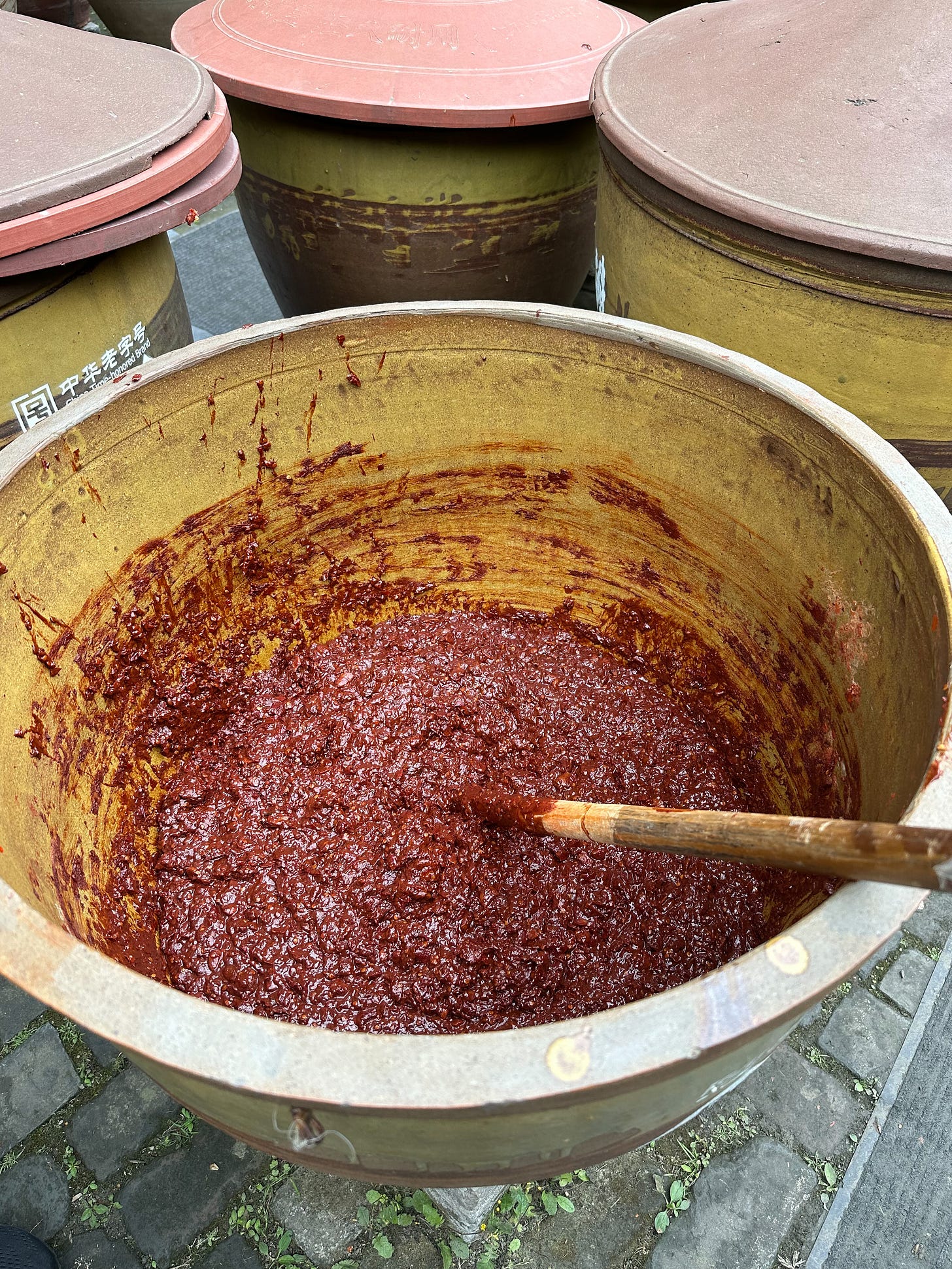
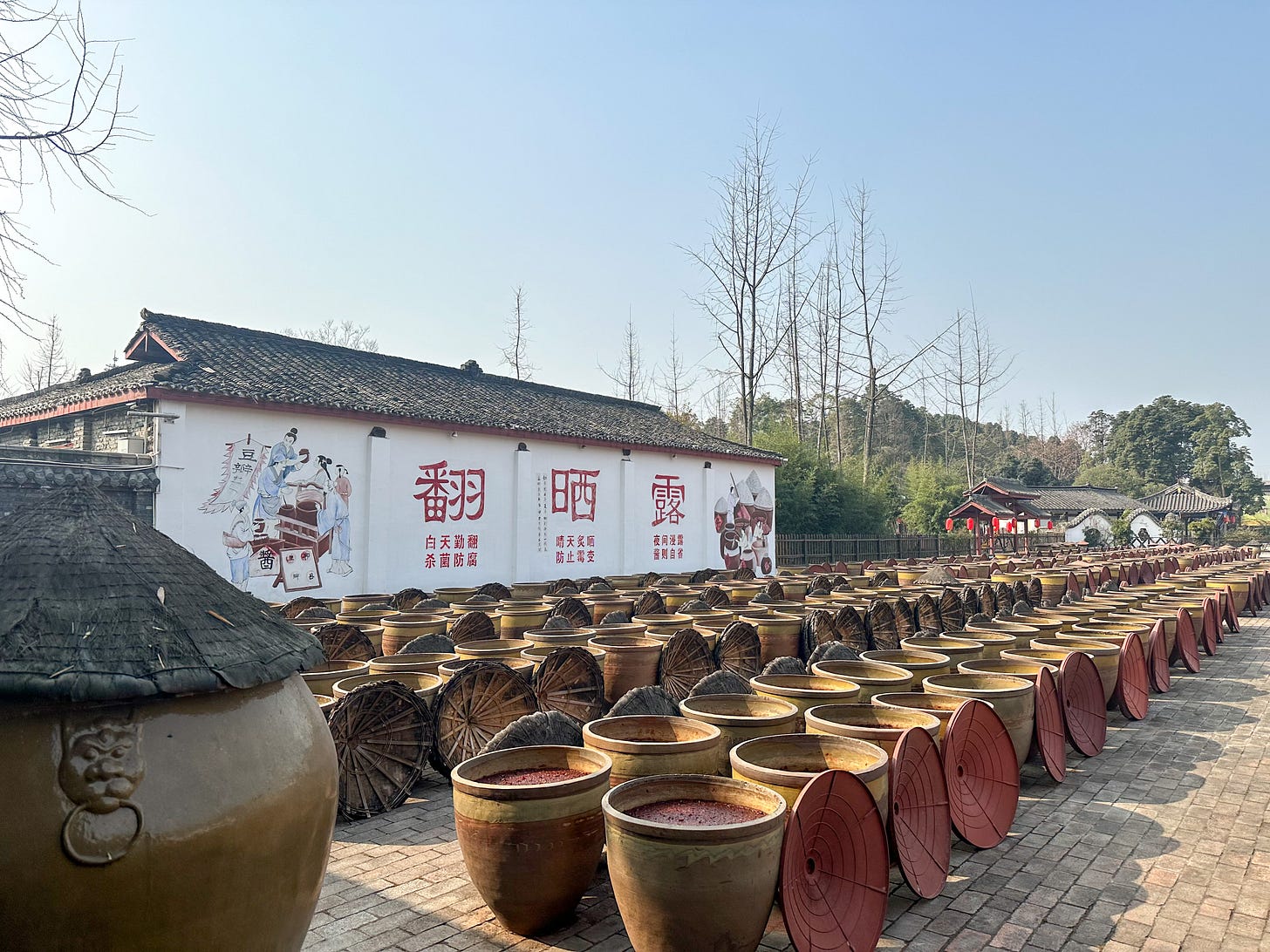
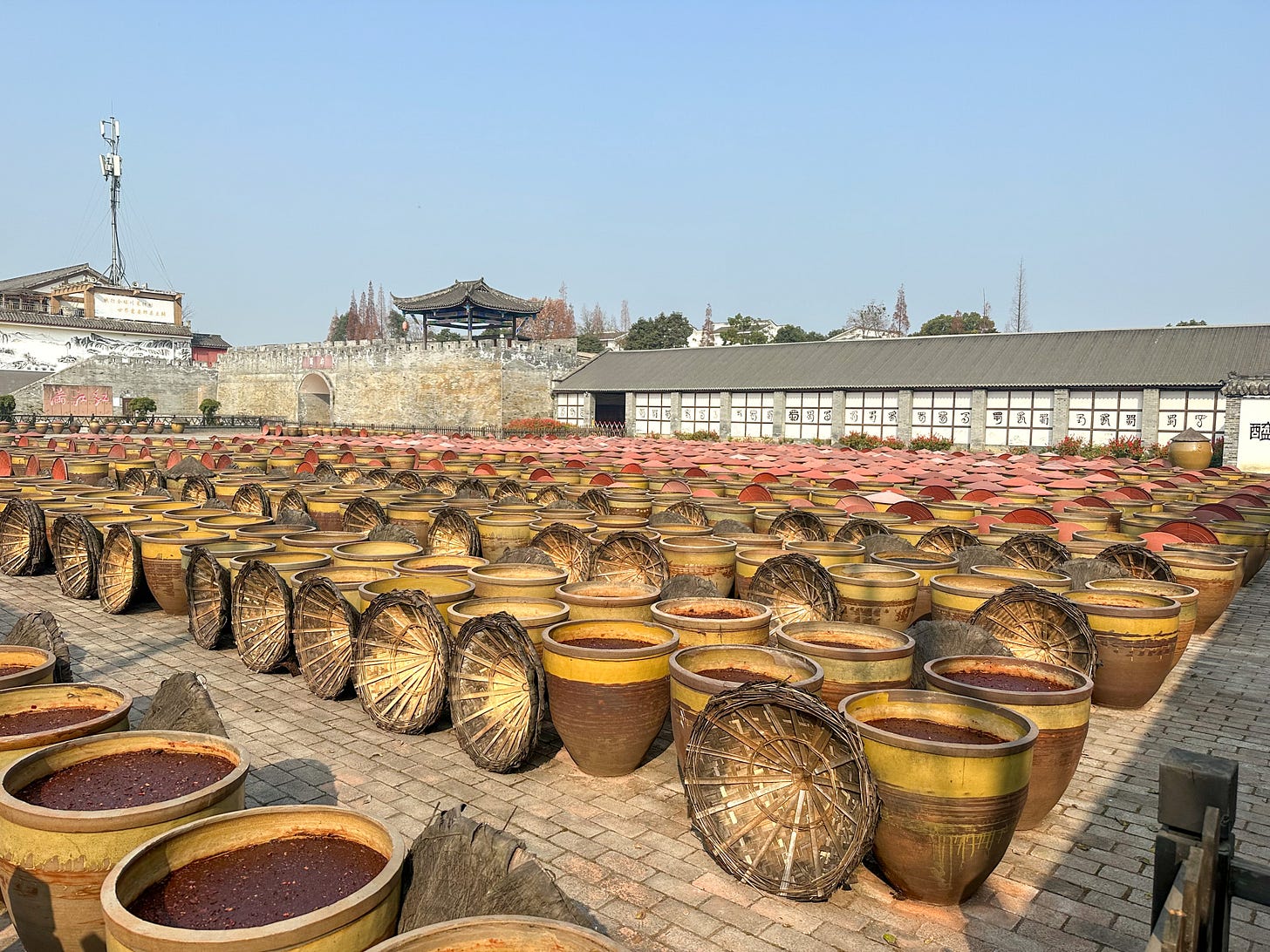
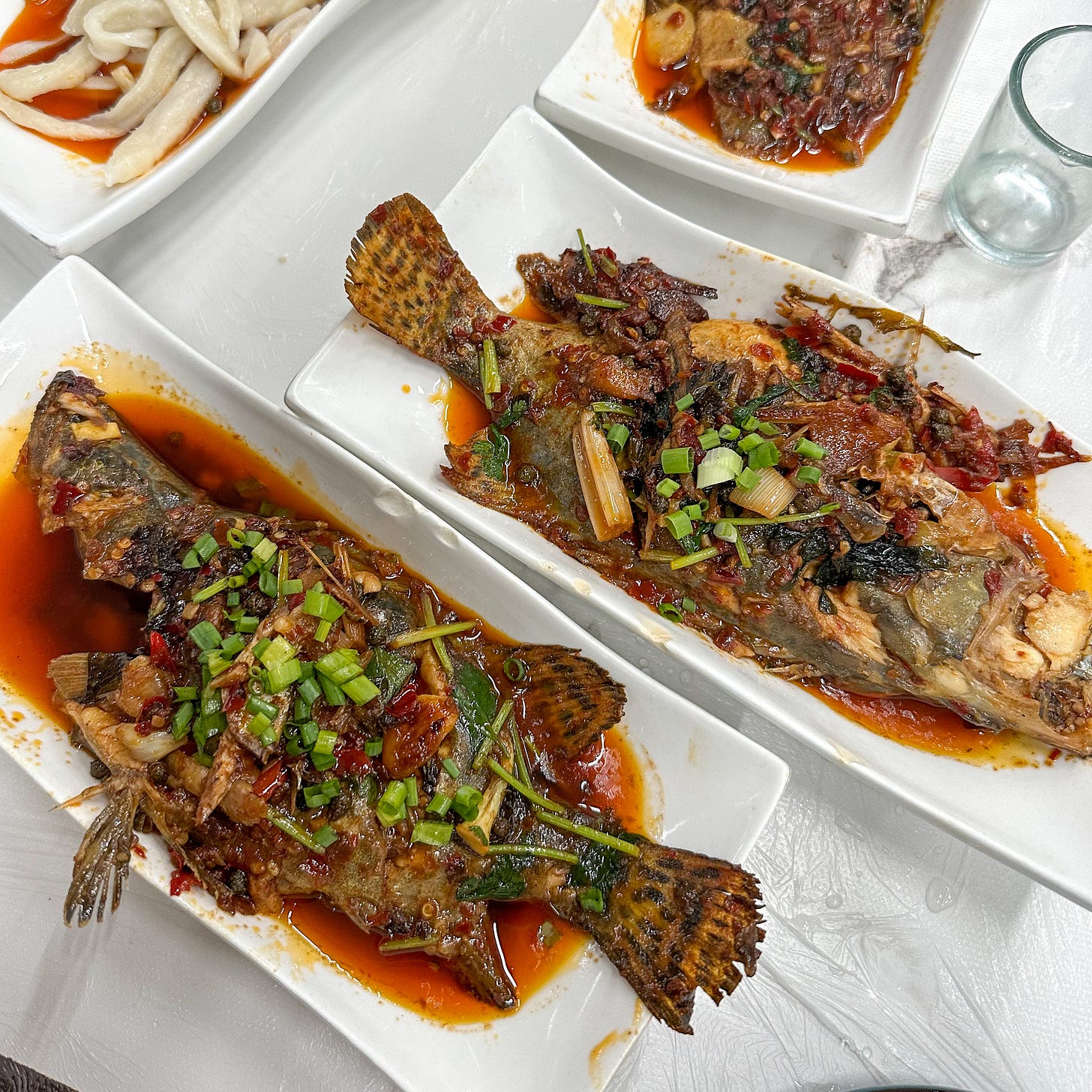

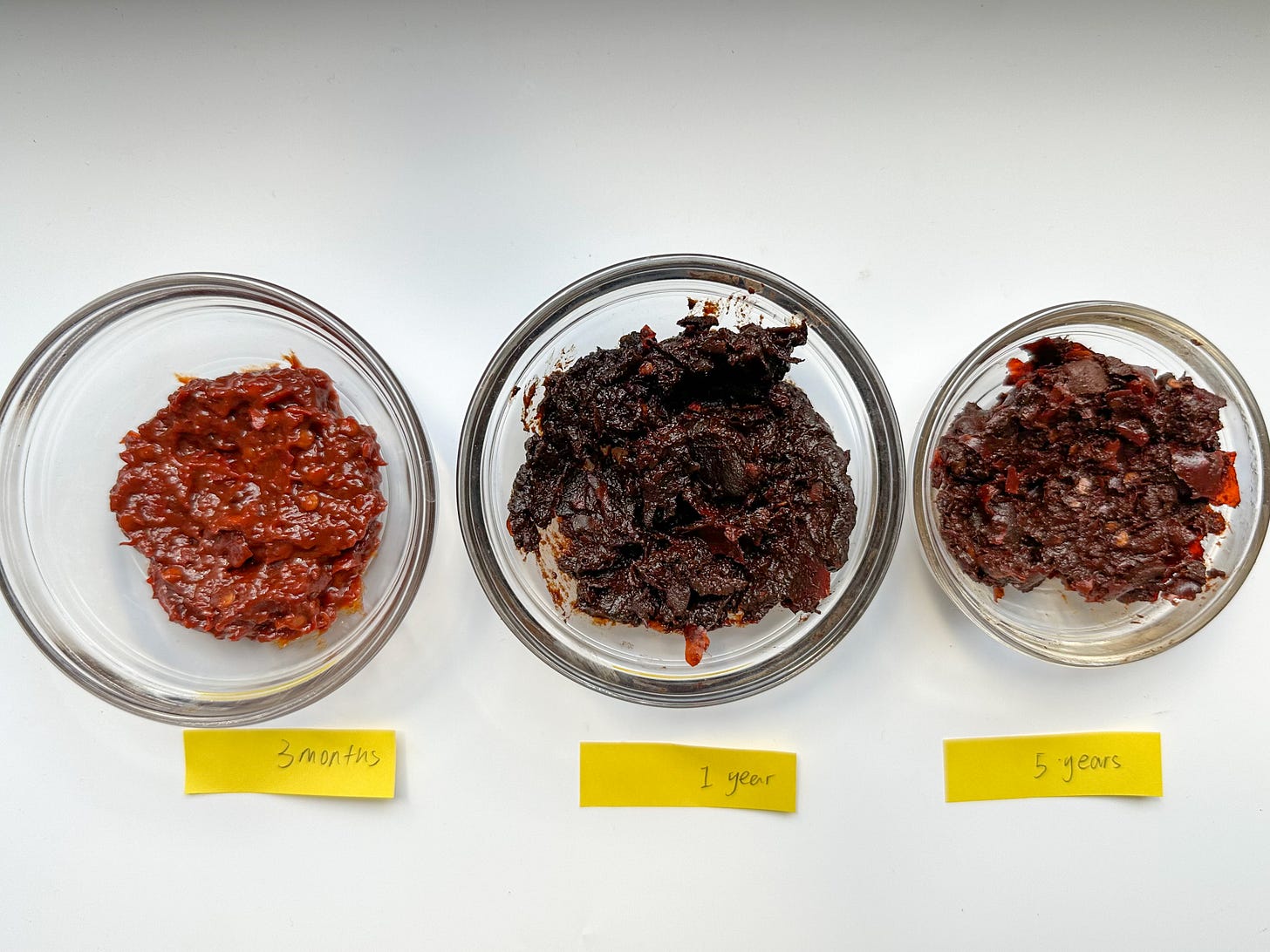
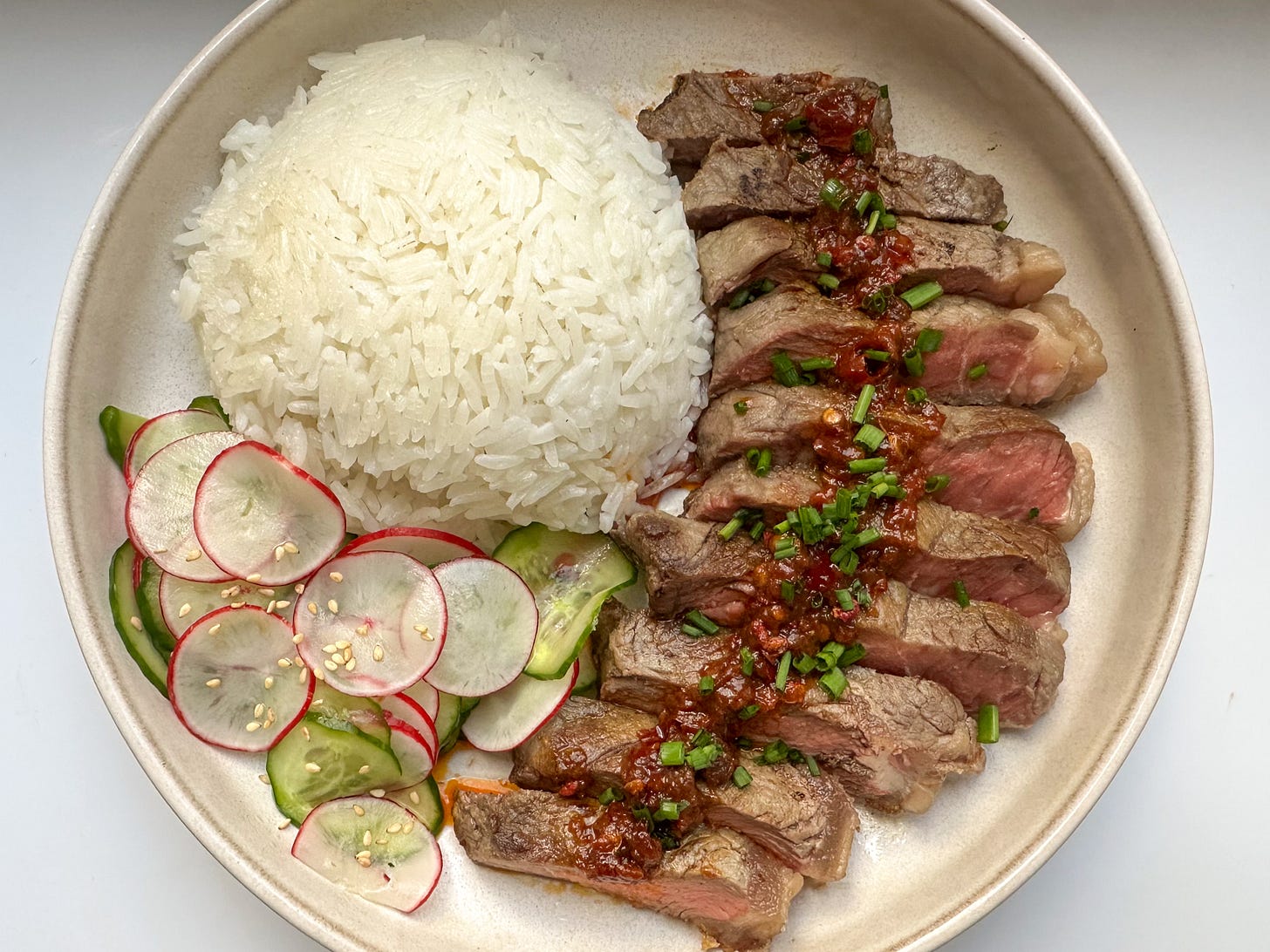
Made this with a vegetarian steak and your black vinegar pickles this weekend. The sauce didn't *quite* tighten up, but it was quite tasty nonetheless!
Love your dive on Chinese kitchen pantry. I used to have Doubanjiang but I never used it enough. Wish it comes in tiny jars. Now whenever a recipe calls for this, I use doenjang or miso plus laoganma chili oil instead.